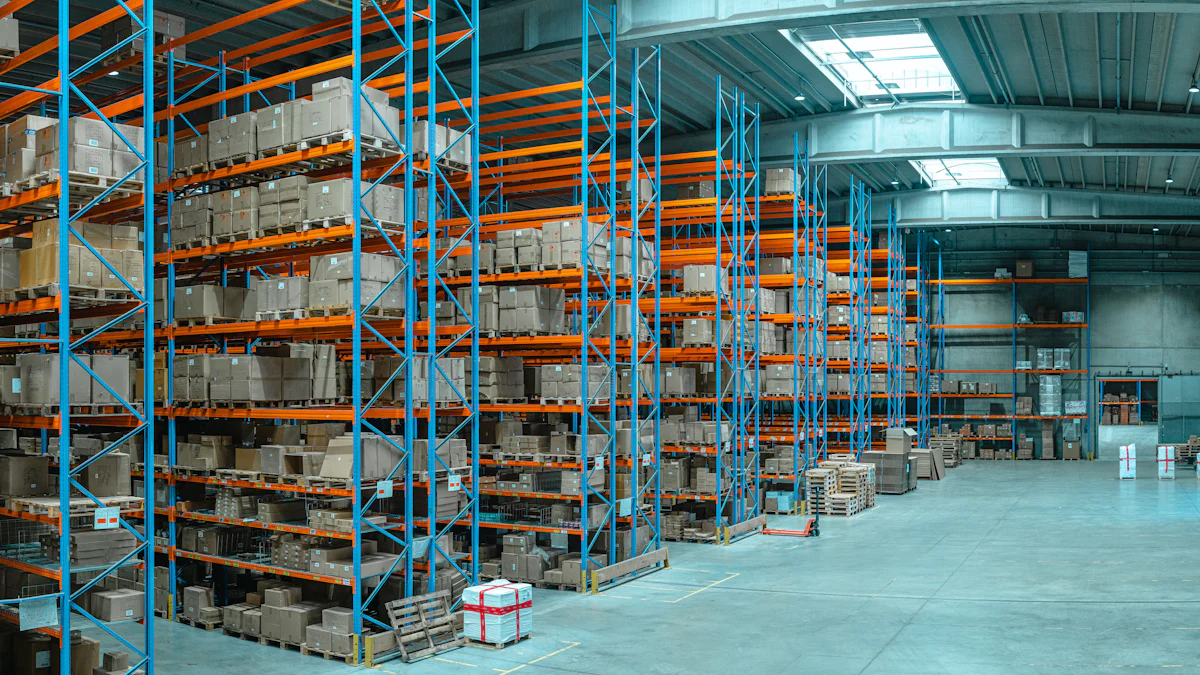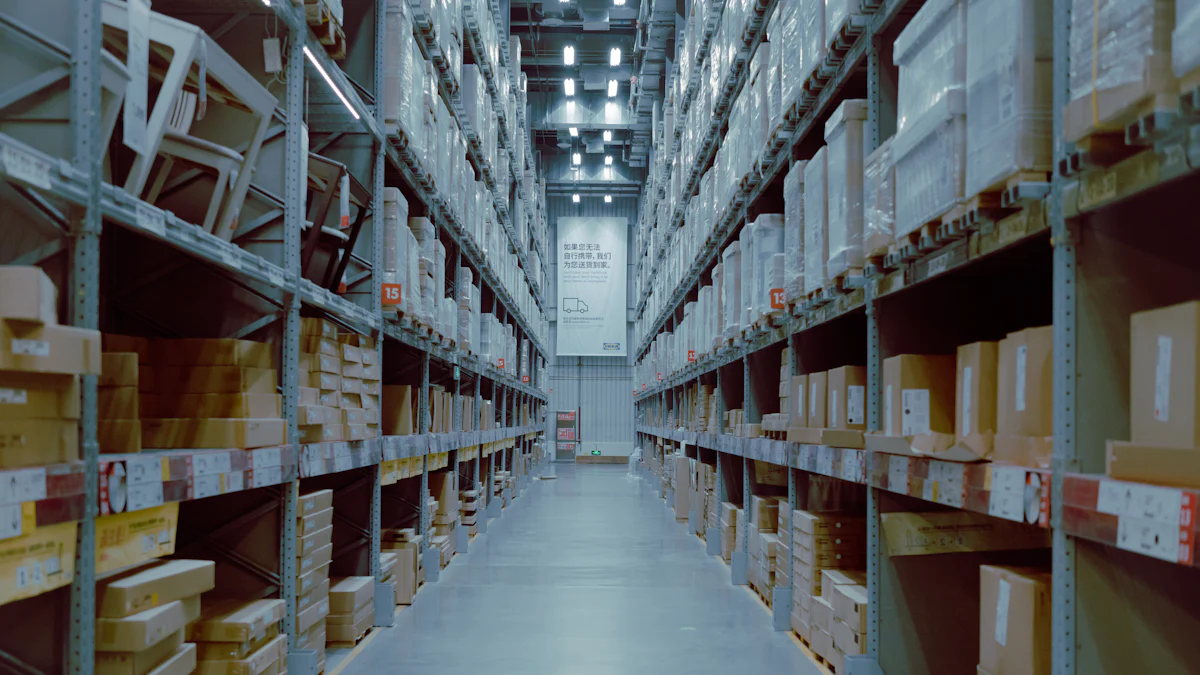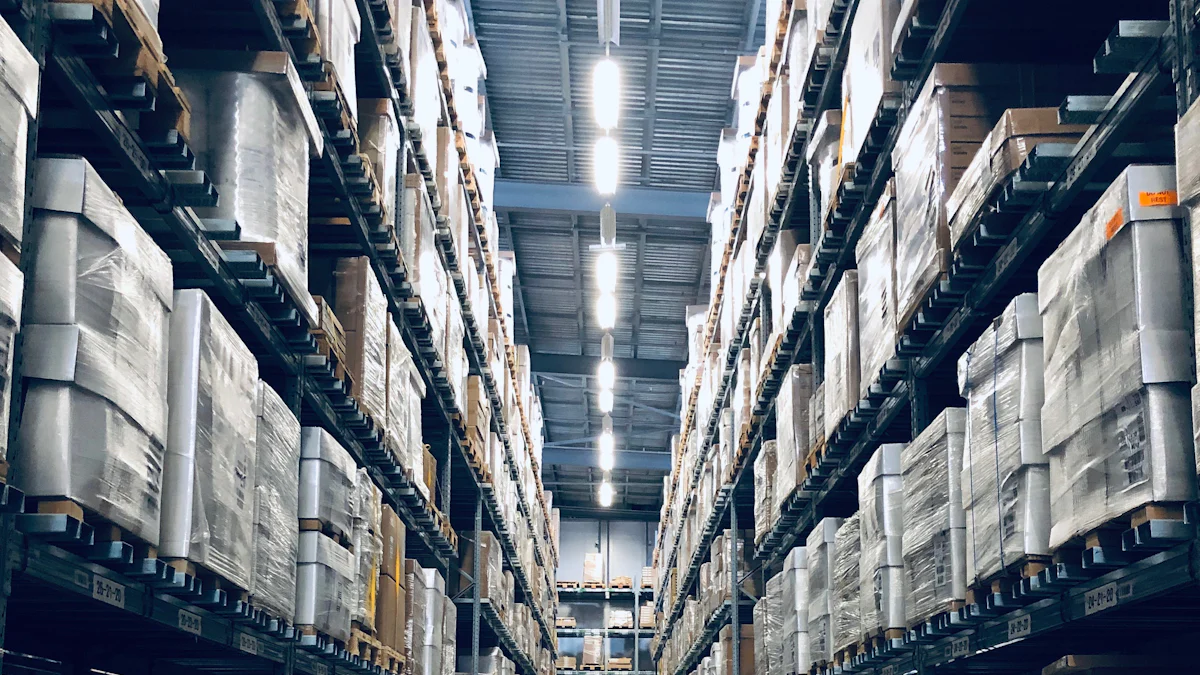A guide to the benefits of global warehousing

Global warehousing refers to the strategic placement of storage facilities across multiple countries. This approach optimizes the movement of goods in international trade. The benefits of global warehousing include cost efficiency, improved customer service, and market expansion. In modern supply chain management, global warehousing plays a crucial role. It ensures faster delivery times and better inventory control. The market for warehousing is growing rapidly. For instance, the global warehousing market was valued at USD 504.28 billion in 2023 and is projected to reach USD 1012.43 billion by 2030.
Key Benefits of Global Warehousing

Cost Efficiency
Economies of Scale
Global warehousing allows businesses to achieve economies of scale. Companies can consolidate shipments from multiple suppliers into one larger shipment. This reduces transportation costs and customs clearance procedures. Storing goods abroad minimizes logistics and transportation expenses. Investing in fulfillment or renting warehouse space can be an additional cost, but the overall savings outweigh these expenses.
Reduced Shipping Costs
International warehouses help reduce shipping costs significantly. By setting up storage facilities in foreign countries, businesses can bypass international shipping complexities. This localization of storage and fulfillment reduces transportation expenses and minimizes the distance to customers. As a result, companies can offer competitive pricing and improve their profit margins.
Improved Customer Service
Faster Delivery Times
One of the primary benefits of global warehousing is faster delivery times. By having storage facilities closer to key markets, businesses can ensure quicker order fulfillment. This proximity to customers reduces transit times and enhances customer satisfaction. Faster delivery times lead to increased customer loyalty and repeat business.
Enhanced Order Accuracy
Global warehousing also improves order accuracy. With localized distribution centers, businesses can better manage inventory and ensure accurate order processing. This leads to fewer errors and returns, enhancing the overall customer experience. Improved order accuracy contributes to higher customer satisfaction and trust in the brand.
Strategic Inventory Management
Better Stock Control
Effective global warehousing enables better stock control. Businesses can monitor inventory levels in real-time and make informed decisions about restocking. This reduces the risk of overstocking or stockouts, ensuring a smooth supply chain. Better stock control leads to efficient operations and cost savings.
Demand Forecasting
Global warehousing supports accurate demand forecasting. By analyzing data from various markets, businesses can predict demand trends and adjust inventory levels accordingly. This proactive approach helps in meeting customer demands without delays. Accurate demand forecasting ensures optimal inventory levels and reduces waste.
Market Expansion
Access to New Markets
Global warehousing provides businesses with access to new markets. Companies can establish storage facilities in foreign countries, allowing them to sell products internationally. This strategy bypasses international shipping complexities and reduces logistics expenses. Businesses can reach customers in different regions more efficiently. Expanding into new markets increases revenue potential and brand visibility.
Localized Distribution
Localized distribution is another significant benefit of global warehousing. By setting up warehouses closer to key markets, companies can reduce transportation costs and delivery times. Local warehousing focuses on minimizing the distance to customers, ensuring quicker order fulfillment. This approach enhances customer satisfaction and loyalty. Efficient inventory management and order processing become easier with localized distribution centers. Businesses can consolidate shipments from multiple suppliers into one larger shipment, reducing customs clearance procedures.
Implementation Strategies
Site Selection
Proximity to Key Markets
Selecting warehouse sites near key markets ensures efficient distribution. Companies can reduce transit times and shipping costs by positioning warehouses close to major consumer bases. This strategic placement enhances customer satisfaction through faster delivery. Businesses can also respond swiftly to market demands and trends.
Infrastructure and Accessibility
Infrastructure quality and accessibility play crucial roles in site selection. Warehouses must have robust transportation links, including highways, ports, and airports. Efficient infrastructure supports smooth logistics operations. Accessibility to suppliers and customers ensures seamless supply chain integration. Evaluating local infrastructure helps in making informed site selection decisions.
Technology Integration
Warehouse Management Systems (WMS)
Warehouse Management Systems (WMS) optimize inventory control and order processing. WMS provides real-time data on stock levels and movements. This technology improves accuracy in order fulfillment and reduces errors. Implementing WMS enhances operational efficiency and customer satisfaction. Businesses can make data-driven decisions with WMS insights.
Automation and Robotics
Automation and robotics streamline warehouse operations. Automated systems handle repetitive tasks like sorting and packing. Robotics increase speed and precision in inventory management. These technologies reduce labor costs and improve productivity. Investing in automation leads to long-term cost savings and operational excellence.
Workforce Management
Training and Development
Training and development programs are essential for workforce efficiency. Employees must understand new technologies and processes. Regular training ensures staff competency and adaptability. Development programs enhance skills and knowledge. A well-trained workforce contributes to smoother operations and higher productivity.
Labor Cost Management
Effective labor cost management balances operational expenses. Companies must analyze labor needs and optimize workforce allocation. Implementing flexible work schedules can reduce overtime costs. Investing in automation can offset labor expenses. Strategic labor management ensures cost efficiency without compromising service quality.
Technologies Enhancing Global Warehousing

Internet of Things (IoT)
Real-time Tracking
The Internet of Things (IoT) revolutionizes global warehousing through real-time tracking. IoT devices monitor the location and condition of goods throughout the supply chain. This technology provides businesses with up-to-the-minute information on inventory status. Real-time tracking enhances visibility and ensures timely deliveries. Companies can quickly address any issues that arise during transit.
Predictive Maintenance
IoT also facilitates predictive maintenance in warehouses. Sensors collect data on equipment performance and usage patterns. This data helps predict when maintenance is needed, preventing unexpected breakdowns. Predictive maintenance reduces downtime and extends the lifespan of warehouse machinery. Businesses benefit from lower repair costs and improved operational efficiency.
Artificial Intelligence (AI)
Inventory Optimization
Artificial Intelligence (AI) plays a crucial role in inventory optimization. AI algorithms analyze historical sales data and market trends. This analysis helps businesses maintain optimal inventory levels. AI minimizes the risk of overstocking or stockouts, ensuring a smooth supply chain. Efficient inventory management leads to cost savings and enhanced customer satisfaction.
Demand Forecasting
AI also excels in demand forecasting. Machine learning models predict future demand based on various factors. These factors include seasonal trends, economic indicators, and consumer behavior. Accurate demand forecasting enables businesses to plan inventory and production schedules effectively. Meeting customer demands promptly enhances brand reputation and loyalty.
Blockchain
Enhanced Transparency
Blockchain technology offers enhanced transparency in global warehousing. Each transaction in the supply chain gets recorded on a decentralized ledger. This record provides a tamper-proof history of goods movement. Enhanced transparency builds trust among stakeholders and reduces fraud. Businesses can verify the authenticity of products and ensure compliance with regulations.
Secure Transactions
Blockchain also ensures secure transactions in warehousing operations. Smart contracts automate and enforce agreements between parties. These contracts execute automatically when predefined conditions get met. Secure transactions reduce the need for intermediaries and lower transaction costs. Blockchain enhances the overall efficiency and security of the supply chain.
Challenges and Solutions
Regulatory Compliance
Navigating International Laws
Global warehousing requires adherence to various international laws. Each country has unique regulations that govern storage and distribution. Companies must understand these laws to avoid legal issues. Non-compliance can lead to fines and operational disruptions. Businesses should employ legal experts to navigate these complexities.
Customs and Tariffs
Customs and tariffs present significant challenges in global warehousing. Import duties and taxes vary by country, impacting cost management. Companies must stay updated on tariff changes to avoid unexpected expenses. Efficient customs clearance processes are essential for smooth operations. Partnering with experienced customs brokers can mitigate these challenges.
Risk Management
Mitigating Supply Chain Disruptions
Supply chain disruptions pose risks to global warehousing. Natural disasters, political instability, and economic fluctuations can affect operations. Businesses must develop strategies to mitigate these risks. Diversifying suppliers and maintaining buffer stock can enhance resilience. Regular risk assessments help identify potential threats.
Contingency Planning
Contingency planning is crucial for managing unforeseen events. Companies should create detailed plans for various scenarios. These plans should include alternative supply routes and backup suppliers. Regular drills and updates ensure preparedness. Effective contingency planning minimizes downtime and maintains service levels.
Cost Management
Balancing Operational Costs
Balancing operational costs is a critical aspect of global warehousing. Companies must manage expenses related to storage, labor, and transportation. Implementing cost-saving measures like automation can reduce labor costs. Efficient inventory management minimizes storage expenses. Regular financial audits help identify areas for improvement.
Investment in Technology
Investment in technology enhances efficiency in global warehousing. Technologies like AI, IoT, and blockchain streamline operations. AI optimizes inventory levels and predicts demand trends. IoT provides real-time tracking and predictive maintenance. Blockchain ensures secure transactions and transparency. Investing in these technologies leads to long-term cost savings.
Technologies in Global Warehousing: The integration of robotics, artificial intelligence (AI), and blockchain in international warehouses is enhancing efficiency, streamlining processes, improving inventory management, and ensuring data security and transparency.
Effective cost management and risk mitigation strategies ensure the success of global warehousing operations.
Global warehousing offers numerous benefits:
Cost efficiency: Achieving economies of scale and reducing shipping costs.
Improved customer service: Ensuring faster delivery times and enhanced order accuracy.
Strategic inventory management: Enabling better stock control and accurate demand forecasting.
Market expansion: Providing access to new markets and localized distribution.
The future of global warehousing looks promising. Advancements in technology, such as AI, IoT, and blockchain, will continue to enhance efficiency and transparency. Businesses should consider adopting global warehousing strategies to stay competitive and meet growing consumer demands.
See Also
Unveiling Top Global Logistics Firms: A Comprehensive Guide
Maximizing Warehouse Efficiency with Robotics in Logistics
Embracing Automation: Advantages of High-Tech Manufacturing Warehouses
